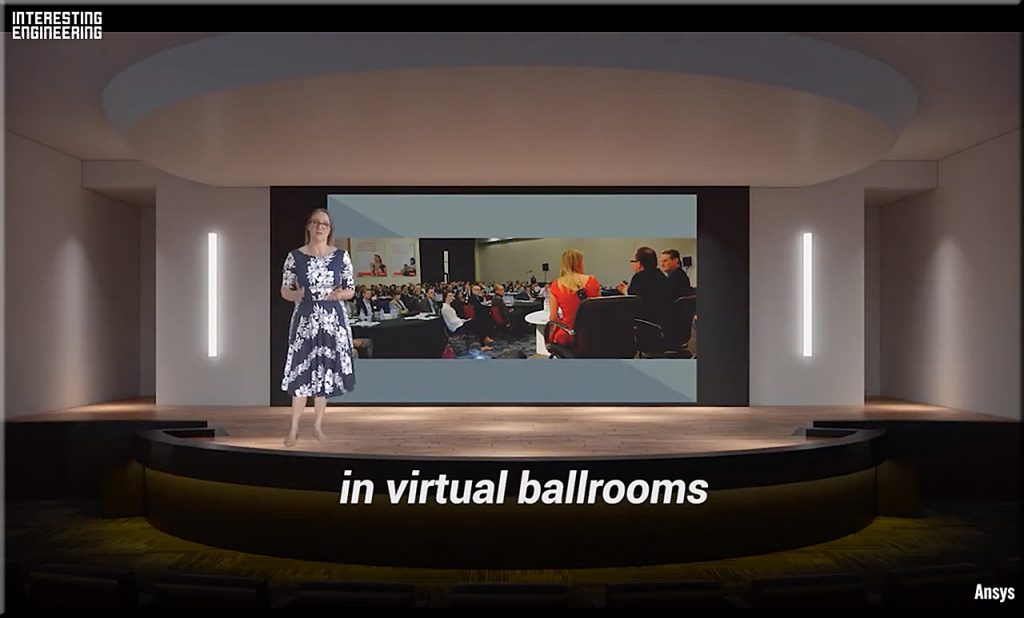From DSC:
After hearing about Ansys’ June virtual conference, I couldn’t help but wonder…will online-based learning experiences leverage what’s happening with virtual conferences?

From DSC:
After hearing about Ansys’ June virtual conference, I couldn’t help but wonder…will online-based learning experiences leverage what’s happening with virtual conferences?

The “new normal” paradox: What COVID-19 has revealed about higher education — from bigthink.com by Dr. Michael Crow, President of ASU
Excerpt:
Third, it is abundantly apparent that universities must leverage technology to increase educational quality and access. The rapid shift to delivering an education that complies with social distancing guidelines speaks volumes about the adaptability of higher education institutions, but this transition has also posed unique difficulties for colleges and universities that had been slow to adopt digital education. The last decade has shown that online education, implemented effectively, can meet or even surpass the quality of in-person instruction.
Digital instruction, broadly defined, leverages online capabilities and integrates adaptive learning methodologies, predictive analytics, and innovations in instructional design to enable increased student engagement, personalized learning experiences, and improved learning outcomes. The ability of these technologies to transcend geographic barriers and to shrink the marginal cost of educating additional students makes them essential for delivering education at scale.
Far too many higher education outcomes are determined by a student’s family income, and in the context of COVID-19 this means that lower-income students, first-generation students and students of color will be disproportionately afflicted. And without new designs, we can expect post-secondary success for these same students to be as elusive in the new normal, as it was in the old normal.
…
This is not just because some universities fail to sufficiently recognize and engage the promise of diversity, this is because few universities have been designed from the outset to effectively serve the unique needs of lower-income students, first-generation students and students of color.
Remote collaboration and virtual conferences, the future of work — from forces.com by Charlie Fink
Excerpts:
Ten weeks ago, Jesse Damiani, writing on Forbes.com, told the story of a college professor who turned his course about XR into a research project about remote collaboration and virtual conferences.
…
He and his students reimagined the course as an eight-week research sprint exploring how XR tools will contribute to the future of remote work—and the final product will be a book, tentatively titled, Remote Collaboration & Virtual Conferences: The End of Distance and the Future of Work.”
This is a chapter of that book. It will be available on June 15.
The thing everyone wants is not a technology, it’s engagement. The same kind of engagement that you would have in real life, but better, faster, cheaper *and safer* than it was before.
Also see:
Tech conferences are going virtual, and it feels like Netflix content on demand — from .marketwatch.com by Jon Swartz
Excerpt:
Such is the new world of tech conferences in the age of COVID-19. They’ve gone all-digital, like Build and GTC Digital, and may never be the same. Absent a vaccine, the days of thousands of people herded into hotel ballrooms and convention centers like cattle, sharing cabs and eating in cramped quarters, are gone.
Far from crippling the tech industry, however, virtual shows could lead to democratization of what had once been an exclusive, pricey privilege for tech movers and shakers. In the new climate, consumers have free access to valuable technical content whenever they wish to view it.
“Last year, I paid several thousand dollars to attend, and if I was late for a session, I couldn’t rewind it. This year, I could.”